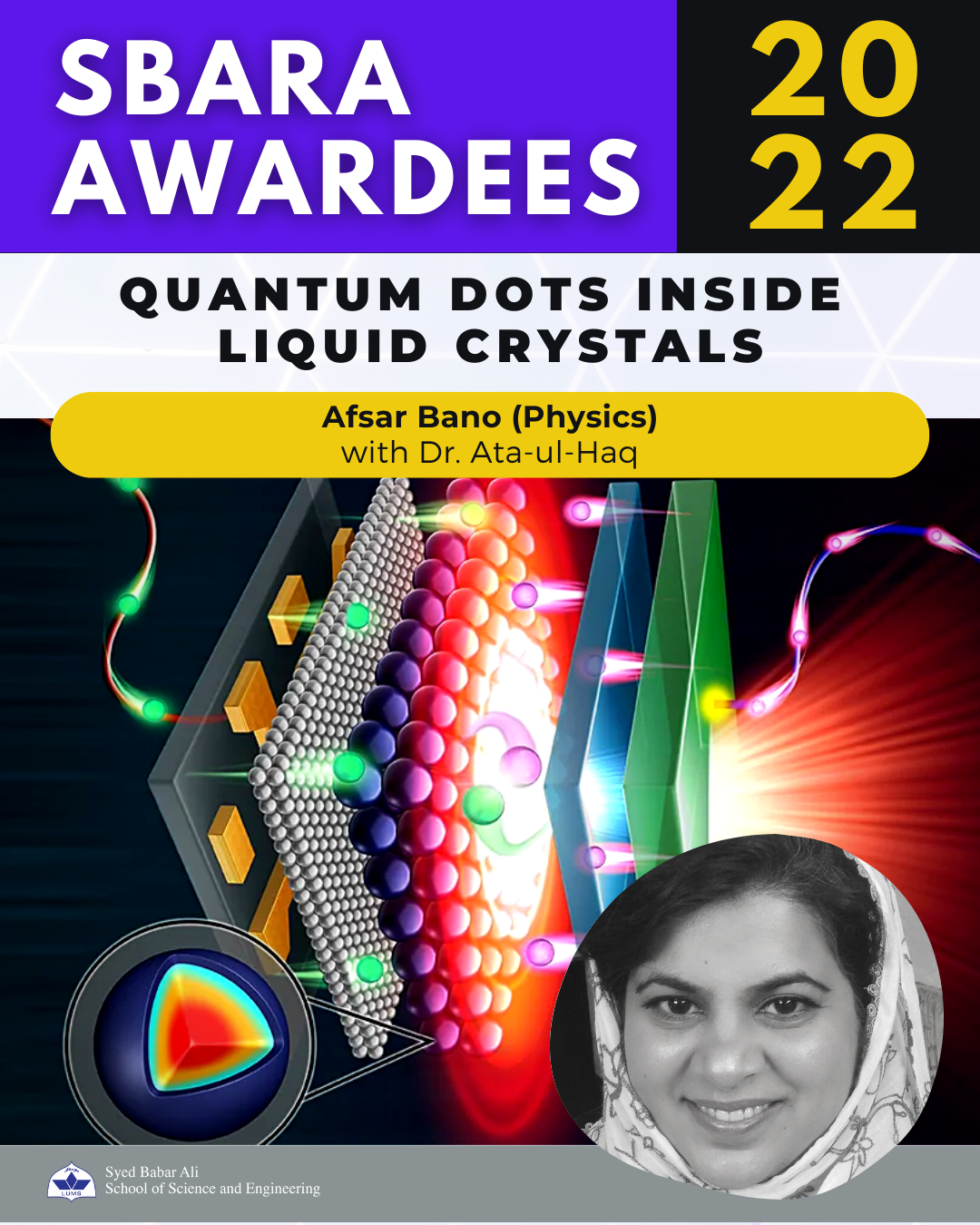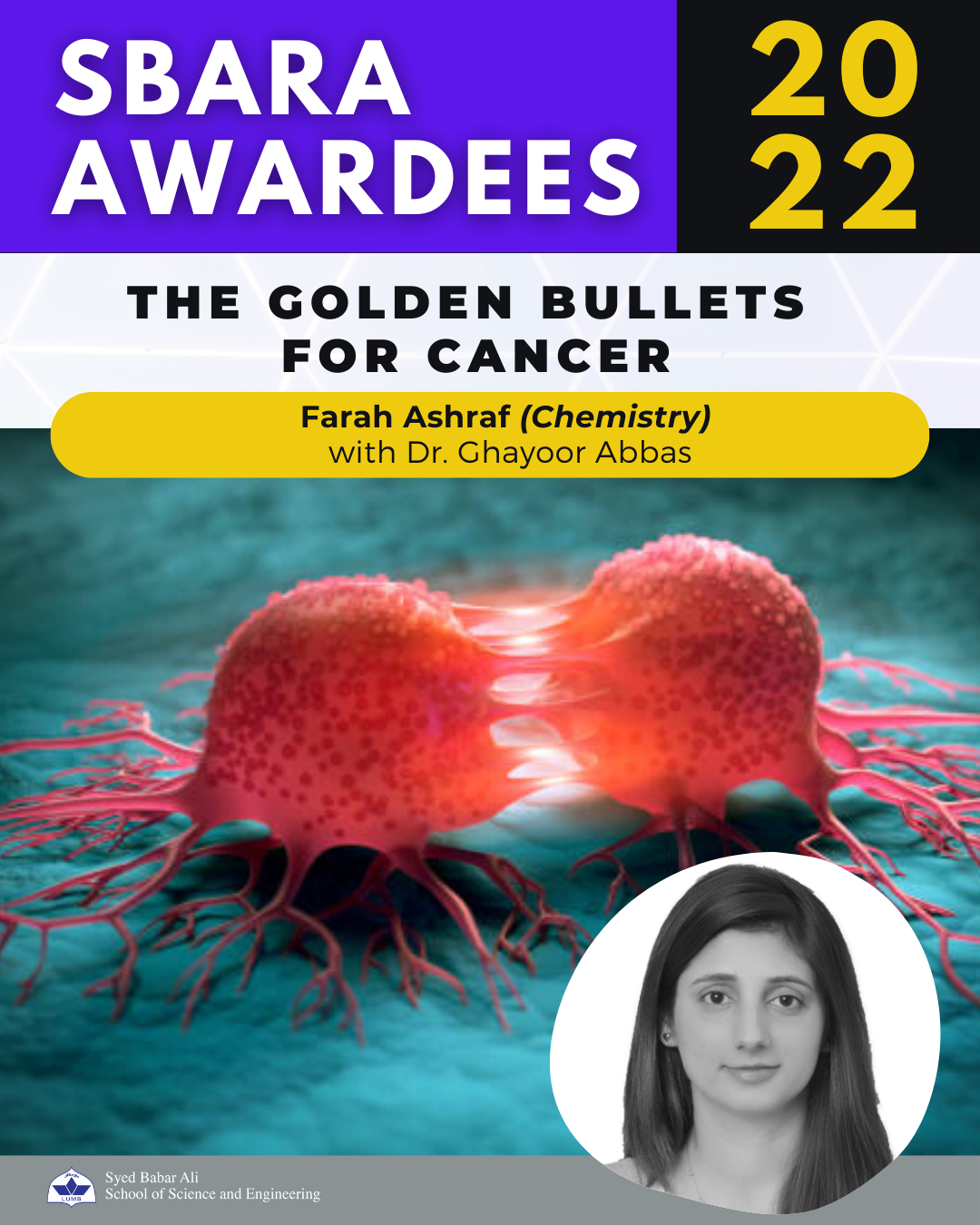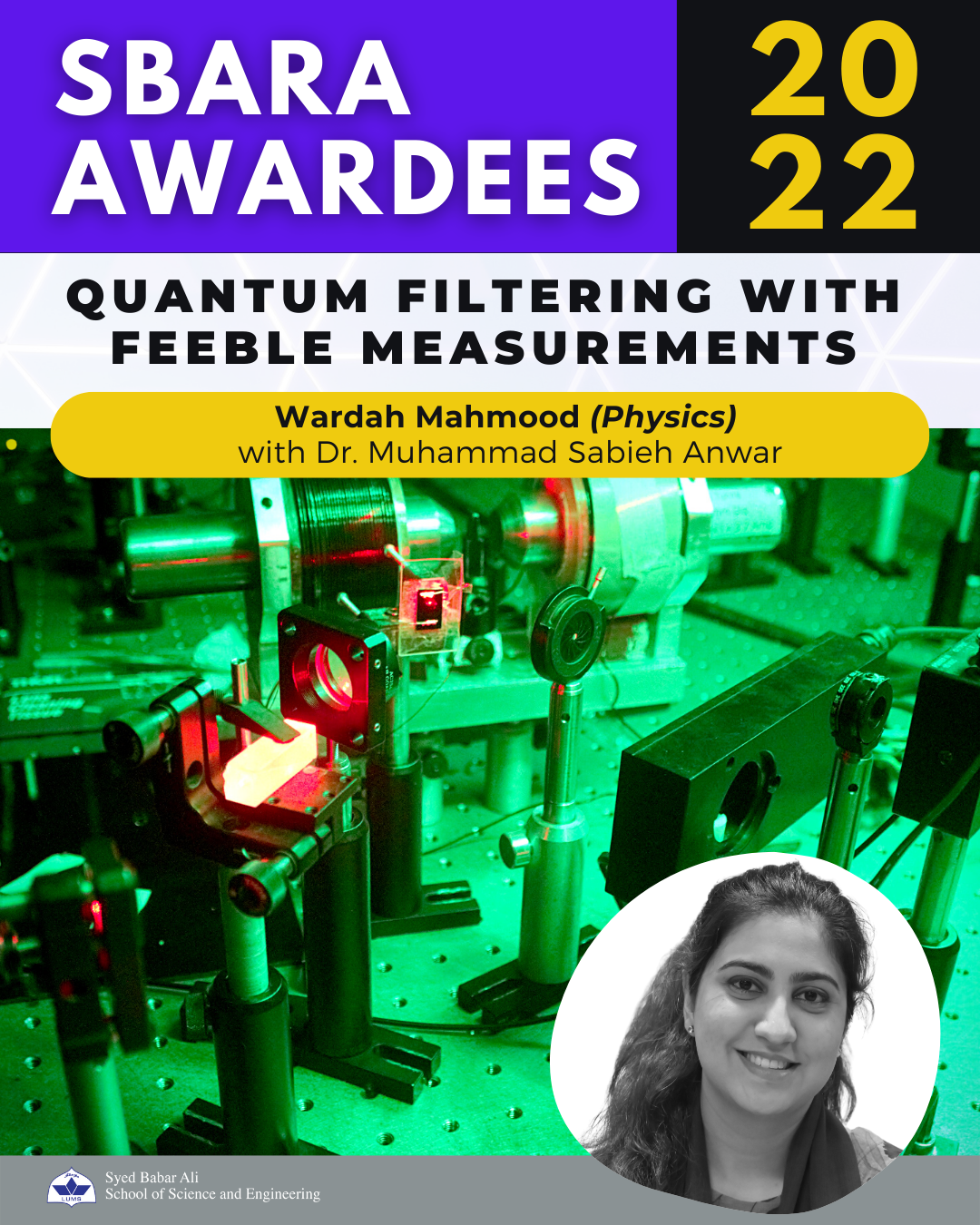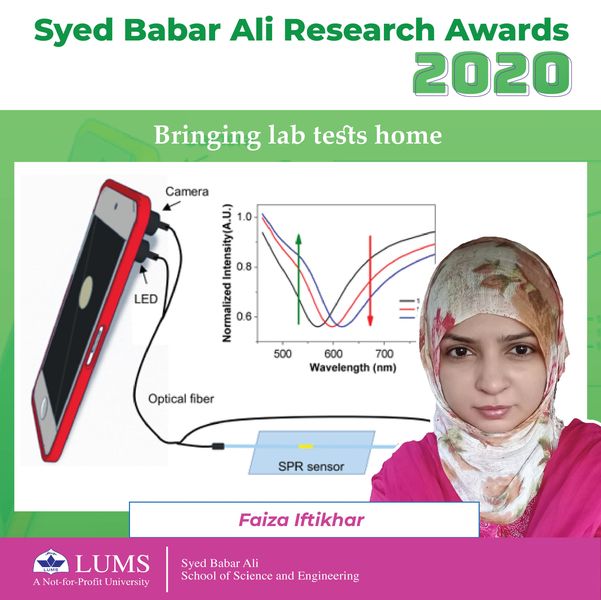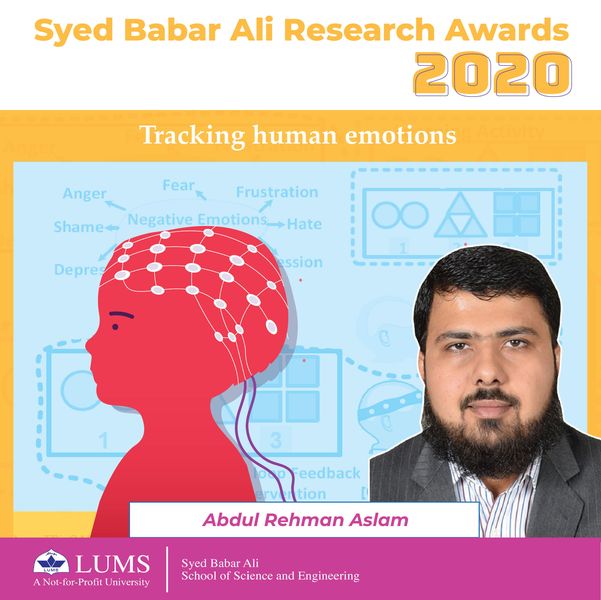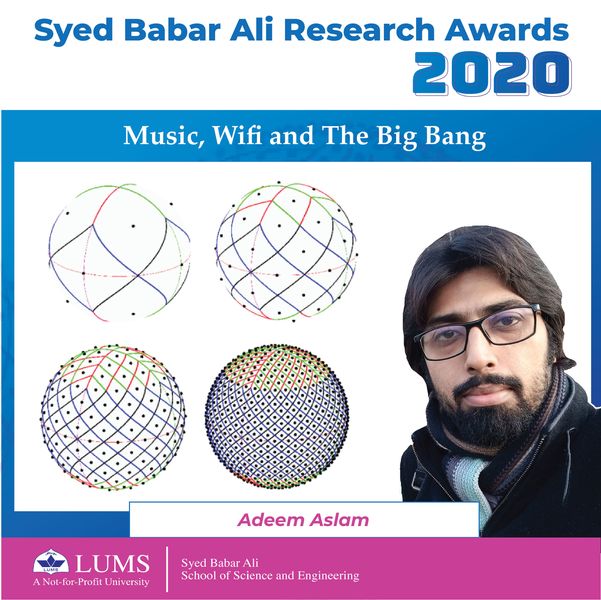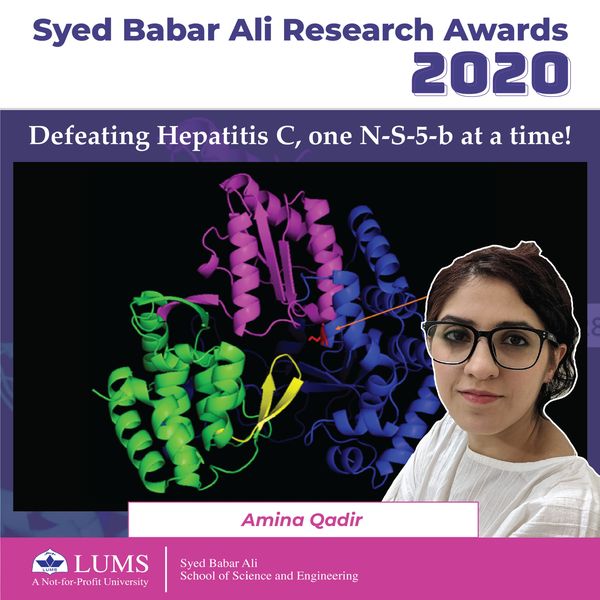Syed Babar Ali Research Awards
This award is sponsored by the Babar Ali Foundation.
The Syed Babar Ali (SBA) Research Awards Program recognizes and supports potentially high-impact work being carried out by current PhD students in the Syed Babar Ali School of Science and Engineering, LUMS. The recipients of this award are expected to pursue research and scholarly activities that support knowledge creation and innovation in science and engineering as well as contribute to the economic well-being of society at large. As part of this prestigious programme, the awardees benefit from a monthly stipend as well as additional research support (for example, for procuring equipment, consumables, covering research travel expenses, publication fee for journals etc.) from a central fund exclusively allocated for this program. The award is sponsored by the Babar Ali Foundation.
As part of this prestigious programme, the winners benefit from a monthly stipend of PKR 50,000 in addition to the stipend contribution from their PhD supervisors. Moreover, they are eligible to apply for additional research support (for example, for procuring equipment, consumables, covering research travel expenses, publication fee for journals etc.) from a central fund exclusively allocated for this program as discussed below.
Please click here to get more information about eligibility criteria, the application process and other rules.




